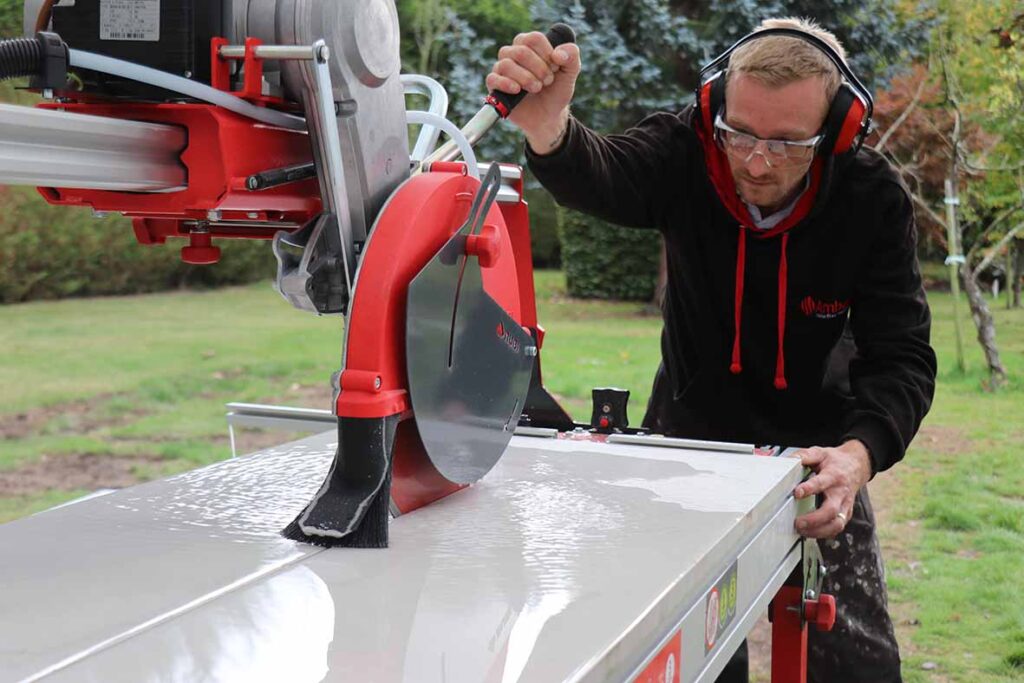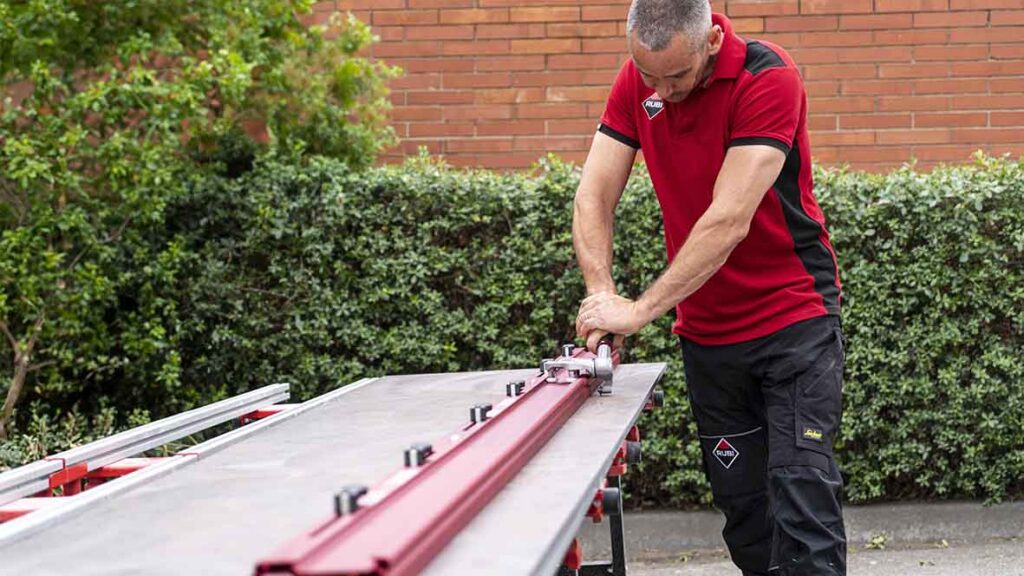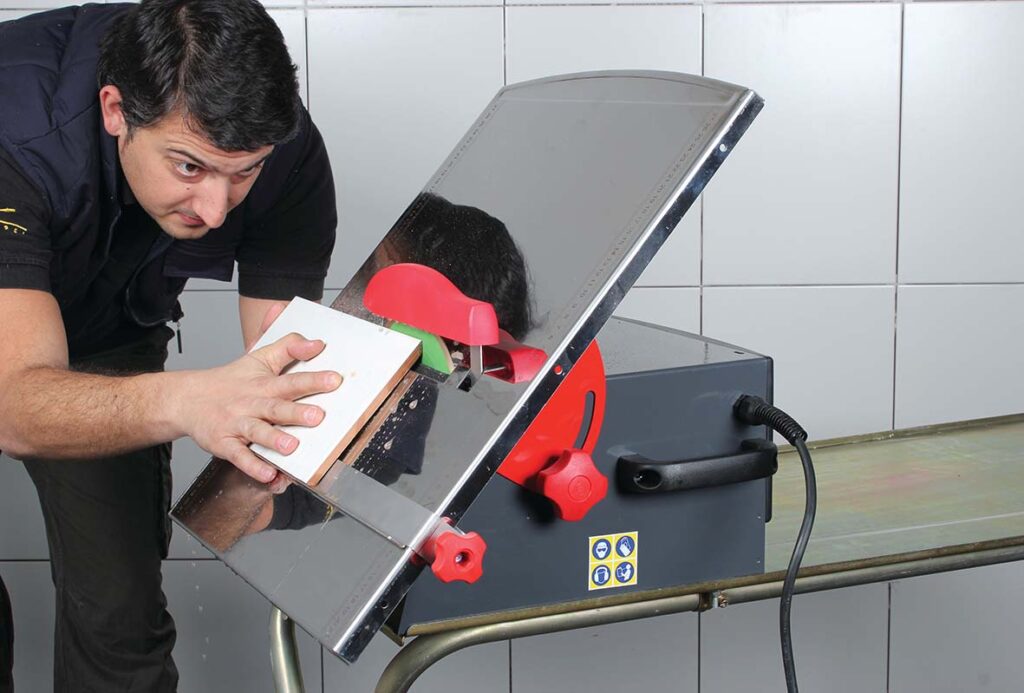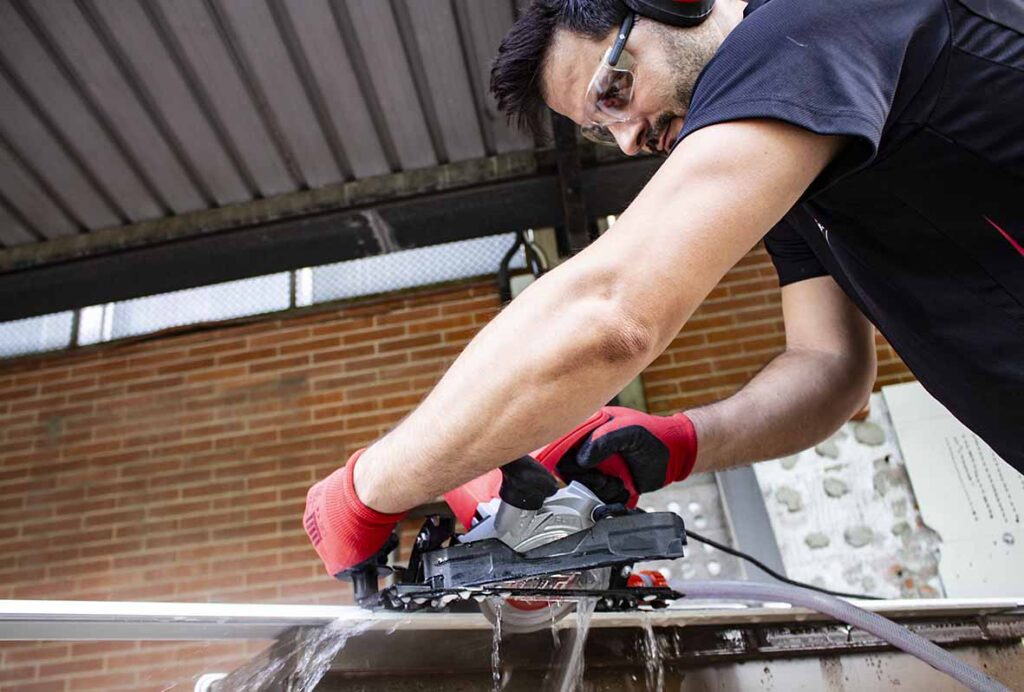Are you thinking about doing some renovation work in your home, maybe even taking up some DIY projects and learning how to tile? If so, you may be wondering which tile cutting machine you should use? Tiles are an incredible versatile material for renovations and DIY work. They can be used in the kitchen, bathroom, hallway, living room, and many other places in a home. But, sometimes they need cutting down to size to fit your space. For this you’ll need the right tool for the job.
There are a few different tools available on the market. Using the wrong tile cutting machine can leave your tiles with a bad finish or even break them completely. Therefore, it’s important you know the best types of tile cutting machine and how to use them before you get started.
Whether you’re tackling a simple or complex tile installation, discover the essential tile cutters for your projects. Let’s explore the types of tile cutting machines you’ll need.


WHICH TILE CUTTING MACHINE IS RIGHT FOR YOU?
Before you begin looking at the different types of tile cutters, first you need to know what type of material you’re working with. This includes looking at the thickness of tiles you will be using on your project.
As a rule of thumb, the tougher the material of your tile, the stronger your tile cutter must be. For example, if you’re cutting ceramic you won’t need as much strength and durability compared to cutting porcelain tiles. If you’re using granite or stone tiles, you’ll need an even stronger tile cutting machine.
DIFFERENT TYPES OF TILE CUTTING MACHINES
A tile cutting machine is a broad term used to describe any tool that cuts tiles. The two main types are manual tile cutters and tile saws, also known as wet saws. We’ve listed the various tile cutting tools in each category to help you choose the right one for your project.
MANUAL TILE CUTTERS
This type of tile cutter is manually operated, easy to use, and doesn’t require a power source. It works by scoring a straight line along the tile’s surface, then applying pressure on both sides of the score to snap the tile. Available in various sizes, these cutters are highly portable.
Typically, manual tile cutters come in a single rail or dual rail system. It might take a few trials of each to find which one you feel more comfortable with using.

However, it’s worth remembering that not all manual tile cutters are made the same. Some are designed for light DIY work with softer ceramic tiles, therefore they have a lower breaking power. Others are made for professional work. These are typically larger, take a little more time to set up, and have a stronger breaking power for tougher tiles.
TILE NIPPER
If you have an intricate shape to place a tile around, such as a pipe, or you’re working with mosaics then a tile nipper might be a good choice to consider. This tool is used to nibble away at small pieces of tile. You use it similarly to how you would use a pair of pliers.
Tile nippers are a great option for cutting tiles in shapes that aren’t a straight line. There are typically two types of tile nippers available, one for ceramic tiles, and one for porcelain tiles. The differences between these two tile materials means that the scoring wheel on the nippers needs to be different to score across the tile surface.
RAIL TILE CUTTING MACHINE
Last but not least, in the manual tile cutting category you have rail operated systems. These are best for large format tiles. With a typical tile cutter, you position the tile on the cutting bed, then score and snap. In this system, the rail is secured to the tile surface using suction cups and clamps. A scoring carriage fits into the rail, allowing you to score a straight line across the tile’s surface.
In this system, tile separation is done using breaking pliers. By positioning the pliers at one end of the tile over the scored line and applying pressure, the tile snaps, just like it would with a manual tile cutter.

ELECTRIC TILE SAWS
A tile saw uses a diamond blade to cut through the tile. Tile saws are much larger, heavier, and require a power source. A lot of dust is produced while using these, along with some heat. They typically have a water reservoir as a cooling method for the blade, which also helps to reduce dust. Tile saws are better for projects that use thick tiles.
Like manual tile cutters, not all tile saws are the same. While generally larger than manual cutters, some models are more compact, with lower horsepower and smaller motors.

This type of tile cutting machine requires more setting up and knowledge before using. You have to consider the type of tile you will be using in your project before you think about the type of electric tile cutting machine you use.
Our DC Python is a great starting point. It’s ideal for DIY work and professional tilers. It can easily cut through ceramic and porcelain tiles and has a variety of blades available for it.
If you’re doing more intensive work with porcelain and natural stone, then our DCX might be the better option. For the thickest and hardest materials, our DX 350 is the best choice.
TABLE-TOP SAW
This type of electric cutter is smaller than wet saws but just as versatile. It takes up less space and isn’t as powerful as the DC, DCX, or DX machines. However, it’s a great option for DIY projects involving ceramic and porcelain tiles.

When using an electric saw, the tile sits on the cutting bed and the blade is pulled through it. With a table–top saw, you push the tile through the blade. We recommend trying a few table-top saws and electric tile cutting machines to see which one works best for you and the tiles you plan to cut.
ELECTRIC RAIL SYSTEM
Similar to a manual cutting rail system, you can also use a circular saw with a rail system. These saws can operate wet or dry and accommodate various blades. The rail sits on top of the tile and is secured with suction cups and clamps. The circular saw attaches to the rail and is pushed through the tile.
Our TC 125 and TC 180 are electric rail saws and are a great option for people who don’t have the storage space for a larger wet saw, but don’t want to compromise on the quality of cut.

ANGLE GRINDER TILE CUTTING MACHINE
If you own an angle grinder, then you’ll already know how versatile they are. You’ll need to buy a blade suitable for cutting tiles. An angle grinder can be used to cut straight lines or more intricate shapes. Although this isn’t the ideal way to cut a tile (because of the friction and dust it creates) it is an option if you only have a small tile cutting job to do.
WHICH TILE CUTTING MACHINE IS BEST FOR LARGE FORMAT TILES?
If the tiles you’re cutting are large format tiles, then you will need to ensure that the bed of your tile cutting machine is large enough to cut the entire tile, without needing to pause and adjust.
Before you purchase a tile cutter, make sure you have measured the tiles you will be cutting and checked that they can be cut from end to end in one go.
MAINTENANCE AND CARE FOR TILE CUTTING MACHINES
Proper maintenance and care are important for ensuring the longevity and optimal performance of your tile cutting machines. Regularly cleaning your machine after each use is essential to prevent the buildup of dust and debris, which can affect cutting accuracy. For manual tile cutters, check that the cutting wheel is free from any adhesive or tile residue, and periodically lubricate the moving parts to keep them functioning smoothly.
For electric tile saws, check the water reservoir to make sure the blade is sharp and free from rust. Replacing worn or damaged blades not only improves cutting efficiency but also improves safety. Additionally, storing your machines in a dry, clean environment will protect them from corrosion and damage. By following these maintenance tips, you can extend the life of your tile cutting equipment and achieve professional results in all your projects.
WONDERING HOW TO CUT TILES LIKE A PRO?
Whether you’re looking to do a small home renovation project with just a few straight cuts in tiles, or you’re taking on an intricate task, you can find professional tips and tricks about using tile cutters from our experienced team at RUBI.
We provide expert advice to help you choose the best tools, accessories, and materials for your skill level. If you’re ready to start planning your next project, download our full catalog to find everything you need.



Post a comment